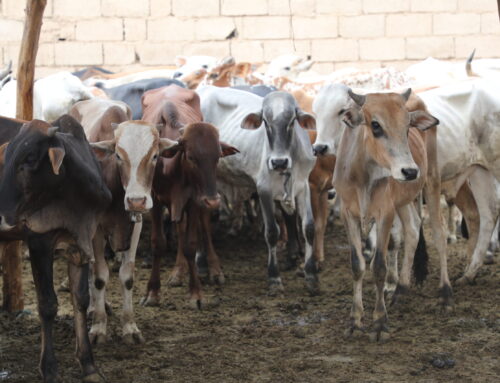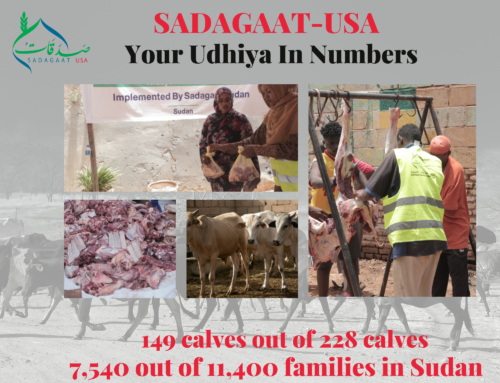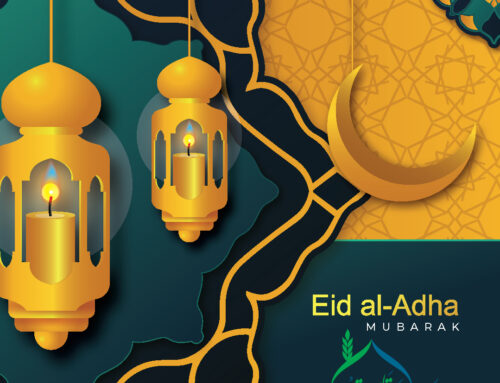Introduction
Eid al-Adha, also known as the “Festival of Sacrifice,” is one of the most significant celebrations in the Islamic calendar. This festival commemorates the willingness of Prophet Ibrahim (peace be upon him) to sacrifice his son as an act of obedience to God. A central aspect of Eid al-Adha is the ritual sacrifice of an animal, known as Udhyia or Qurbani. This article aims to educate both Muslim and non-Muslim communities about Udhyia, its significance, and how it is performed.
What is Udhyia/Qurbani?
Definition and Significance
Udhyia, also known as Qurbani, refers to the ritual sacrifice of a permissible animal, such as a camel, cow, sheep, or goat, during the days of Eid al-Adha. This practice commemorates Prophet Ibrahim’s act of devotion and obedience to Allah. By performing Udhyia, Muslims aim to draw closer to God and demonstrate their willingness to sacrifice for the sake of their faith. The act of Qurbani is a profound expression of faith and compassion, symbolizing the spirit of sacrifice and generosity.
Animals Accepted for Udhyia
The animals that can be sacrificed for Udhyia include camels, cattle, sheep, and goats. These animals must meet specific criteria to be eligible for sacrifice. For example, they must be of a certain minimum age—one year for sheep and goats, two years for cattle, and five years for camels—and free from any defects. These requirements ensure that the sacrifice is done in the best possible manner, honoring the tradition and its significance.
Shares in a Sacrifice
Udhyia can be performed individually or jointly. For example, a single sheep or goat suffices for one person’s Udhyia, while a larger animal like a cow or camel can be shared among seven people. Each person’s share in the larger animal fulfills their obligation of Udhyia. This practice allows more people to participate in the act of sacrifice and share in its blessings.
Who is Obligated to Perform Udhyia?
Conditions of Obligation
Udhyia is considered a confirmed Sunnah (strongly recommended practice) by the majority of Islamic scholars. It is obligatory upon every financially able adult Muslim. The criteria for obligation typically include being of sound mind, having reached puberty, and possessing the financial means to afford the sacrifice without causing hardship. The consensus among scholars emphasizes that performing Udhyia is a significant act of worship and a demonstration of faith and piety.
Performing Udhyia on Behalf of Others
It is permissible to perform Udhyia on behalf of oneself, one’s family members, and even deceased relatives. The intention should be clearly made when performing or donating for Udhyia. This allows the blessings of the sacrifice to extend to loved ones and the broader community, fostering a sense of collective worship and generosity.
Exemptions from Obligation
Those who are not financially able to afford an Udhyia animal are exempted from the obligation. Islamic teachings advise that the act of Udhyia should not cause financial hardship. This principle ensures that the obligation is accessible and considerate of individual circumstances, maintaining the spirit of compassion and ease in Islamic practice.
When is Udhyia Performed?
Timing of the Sacrifice
Udhyia is performed from the 10th to the 13th of Dhul-Hijjah, the 12th month of the Islamic calendar. The best time to perform the sacrifice is after the Eid prayer on the 10th of Dhul-Hijjah. This timing aligns the act of sacrifice with the celebration of Eid al-Adha, enhancing its spiritual and communal significance.
Restrictions During This Period
For those intending to perform Udhyia, it is recommended to avoid cutting their hair and nails from the beginning of Dhul-Hijjah until after the sacrifice is completed. This practice symbolizes solidarity with the pilgrims performing Hajj and adds an additional layer of spiritual preparation and devotion during this sacred period.
Missed Udhyia from Previous Years
There is no obligation to make up for missed Udhiyas from previous years. The focus should be on fulfilling the current year’s obligation. This flexibility ensures that the practice remains manageable and emphasizes the importance of present devotion and adherence to the tradition.
How is Udhyia Meat Distributed?
Dividing the Meat
The meat from the sacrificed animal should ideally be divided into three parts: one part for the family, one part for relatives and friends, and one part for the poor and needy. This division embodies the principles of sharing and community, ensuring that the blessings of Udhyia reach a wide circle of people.
Distribution to Those in Need
In many parts of the world, the meat is distributed to the less fortunate who may not have access to meat throughout the year. This distribution is a way of sharing the blessings of Eid al-Adha and providing for those in need. It reflects the spirit of charity and compassion that underpins the practice of Udhyia.
Ensuring Proper Distribution
Organizations like Hidaya work with local partners to ensure that Udhyia meat is distributed fairly and reaches those who need it most, in accordance with Islamic principles. This collaboration ensures that the distribution process is efficient, equitable, and aligned with the spiritual objectives of Udhyia.
The Spiritual and Social Impact of Udhyia
Strengthening Faith and Devotion
Udhyia is a profound act of worship that connects Muslims to their spiritual heritage. By participating in this ritual, believers reaffirm their faith, demonstrate their obedience to Allah, and express their willingness to make personal sacrifices for the sake of their religion.
Promoting Compassion and Generosity
The practice of Udhyia promotes compassion and generosity by encouraging Muslims to share their blessings with others. By providing meat to the poor and needy, the act of sacrifice extends the joy and blessings of Eid al-Adha to those who might otherwise not experience it. This spirit of giving fosters a sense of community and social responsibility.
Building Community Bonds
Udhyia strengthens community bonds by bringing people together to participate in a shared act of worship. Whether performed individually or collectively, the act of sacrifice fosters unity and cooperation among Muslims. It also provides an opportunity for community members to support one another and reinforce their collective identity.
Supporting Humanitarian Efforts through Udhyia
Organizations engaged in humanitarian work often facilitate the process of Udhyia for those who wish to fulfill their religious obligations while also aiding those in need. For instance, non-profits focused on humanitarian crises in regions like Sudan provide platforms for Muslims to perform their Udhyia. These efforts not only ensure that the sacrifice meets religious requirements but also that the meat is distributed to those who are most in need.
Such initiatives are crucial, particularly in areas facing severe hardship. By participating in these programs, donors can be assured that their Udhyia is making a significant impact. The process involves detailed coordination to ensure that the meat reaches families who may not have access to nutritious food otherwise. This act of sharing is a powerful way to extend the blessings of Eid al-Adha to a broader community.
Conclusion
Udhyia is a profound act of worship that connects Muslims to their spiritual heritage and promotes compassion for those in need. By addressing common questions about this tradition, we hope to foster a better understanding of its significance and encourage participation in this blessed act. As we celebrate Eid al-Adha, let us reflect on the lessons of sacrifice, obedience, and generosity that it teaches us.
For further information and resources on Udhiya and Eid al-Adha, please consult with your local Islamic scholar or reliable online sources. Join us in making a difference by supporting Sadagaat USA and helping those in need during this sacred time.
By understanding and participating in the practice of Udhyia, we can honor our faith, strengthen our communities, and provide for those less fortunate, embodying the true spirit of Eid al-Adha.
















